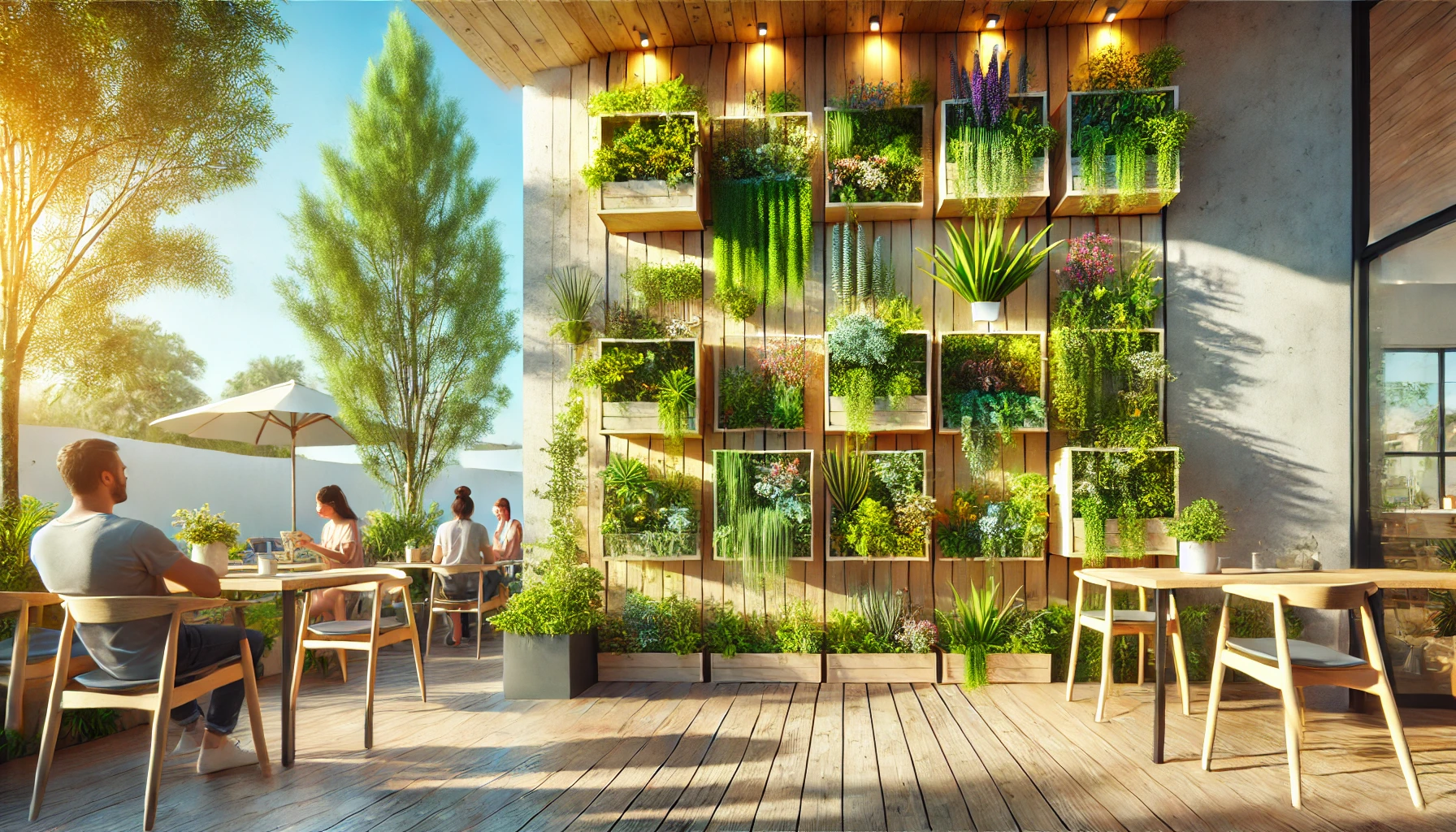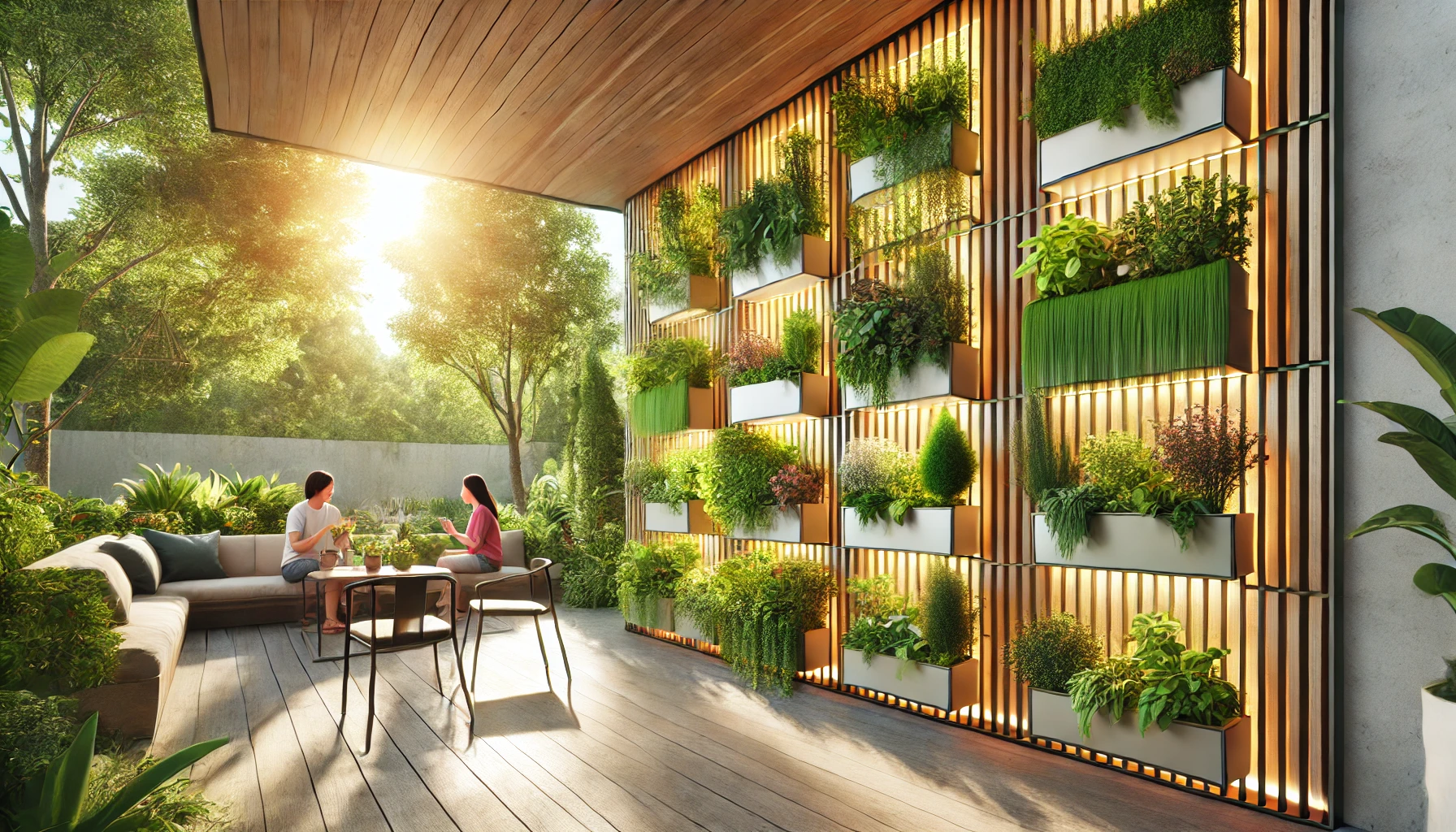Simple vertical garden design is revolutionizing urban gardening by offering a clever solution to space constraints. Imagine transforming your apartment balcony or that drab backyard wall into a lush green sanctuary. It’s all about using every inch to bring nature closer to home.
Urban gardening is booming. More of us are trading concrete for greenery to get that refreshing touch of nature without needing a massive yard. With more folks diving into this green trend, vertical gardens are the go-to for sprucing up even the smallest spaces.
Why go vertical? Well, it’s not just about aesthetics (though a wall of vibrant plants is undeniably striking). Vertical gardens help save space, making them a perfect fit for city living where every square foot counts. Plus, they can enhance air quality and maybe even boost your mood—an absolute win in my book!
How to Make a Simple Vertical Garden
Building your own simple vertical garden may sound daunting, but it’s totally doable and well worth the effort. First up, find the perfect spot. Look for a sunny wall or balcony – your plants will love the light! Even partial shade can work with the right plants, so don’t sweat it if full sun isn’t an option.
Gather your gear. Basic materials like a sturdy frame or pallet, some gardening fabric, and a reliable irrigation system are a must. A hammer, nails, or a good screwdriver might come in handy, too. And don’t forget about soil that’s packed with nutrients to give your plants the boost they need.
Now, onto the fun part. Decide your garden’s layout. It’s like arranging furniture—aim for balance and visual appeal. Start planting, keeping the tallest plants at the bottom to make watering simpler and ensuring they don’t overshadow smaller ones. Basil, strawberries, and even lettuces can make beautiful and practical choices.
Watering will be key, so consider using an efficient drip irrigation setup. Regularly check hydration levels to keep your garden thriving, especially during hot weather. You’ve got your vertical garden thriving in no time, and it’s only up from here, literally!
Best Plants for Vertical Gardens
Choosing the right plants can really make or break your vertical garden, so let’s look at some top picks that thrive in vertical setups. Herbs like basil, mint, and parsley are all-stars here and add flavor to your meals too. They’re compact, grow quickly, and smell amazing!
Got a taste for fresh veggies? Small ones like cherry tomatoes, lettuce, and radishes work beautifully in vertical gardens. They don’t require much space to flourish and can produce quite the bounty with a bit of care and sunshine.
If you prefer a bit of drama and color, go for flowering plants that love to climb. Think begonias or nasturtiums—these will transform your vertical garden into a vibrant display. Plus, these guys attract pollinators, which is fantastic for your ecosystem.
Remember to consider the seasons when selecting your plants. You want to ensure your garden looks good all year round, so mix in evergreen plants for that consistent green backdrop. Succulents are also excellent for year-round charm and don’t mind if you occasionally skip watering.
A little planning goes a long way in making sure your vertical garden is not just thriving, but also stunning. So pick your plants wisely, and watch your garden grow into something you’re thrilled to show off.
Advantages of Simple Vertical Garden Design
Vertical gardens aren’t just eye candy; they pack a punch when it comes to space-saving and practicality. Living in the city often means tight quarters, but with vertical gardening, you can turn just about any nook into a leafy haven.
Why squeeze in pots and planters on your floor when walls are fair game too? It’s smart and stylish. Plus, vertical gardens can actually help with insulation, reducing noise and temperature fluctuations—a total win-win!
Beyond aesthetics and practical perks, vertical gardens bring an environmental bonus to the table. They can help improve air quality by absorbing carbon dioxide and releasing oxygen, which is excellent for your living space. Plus, these green walls are fantastic at trapping dust and other pollutants.
For those of us feeling the urban jungle blues, tending to a vertical garden can be remarkably therapeutic. There’s something soothing about nurturing plants and watching them grow. Not to mention, they can be a talking point, sparking conversations and connections with neighbors and friends.
Community spaces especially benefit from vertical gardens, transforming bland walls into verdant points of interest, contributing to a greener urban landscape. So, it’s not just about you—it’s about the community too.
Drawbacks and Challenges of Vertical Gardening
While vertical gardening offers plenty of perks, it’s essential to be aware of a few potential drawbacks. Let’s keep it real—unlike traditional gardening, vertical gardens do present unique challenges.
First up, watering can be tricky. Gravity isn’t exactly your friend here, as water tends to trickle down and leave the top levels dry. To tackle this, consider installing a drip irrigation system. It might sound fancy, but it’s a lifesaver by keeping your plants evenly hydrated without wasting water.
Next, there’s the weight factor. Depending on the number of plants and the type of system you use, your vertical garden can get quite heavy. Ensuring that the supporting structures are sturdy and well-anchored is crucial. No one wants a cascading garden mess!
Nutrient delivery becomes another hurdle. In a vertical setup, soil can dry out faster and lose nutrients quicker. Regularly checking and replenishing with liquid fertilizers can keep your plants in top shape.
Pests and diseases can crop up too. Since plants are grouped closer together, it’s easier for diseases to spread. Keeping a close eye on plant health and addressing any issues promptly with organic solutions or pest control can prevent tiny problems from becoming big headaches.
Despite these challenges, with a bit of planning and regular care, vertical gardening remains a rewarding venture that’s well worth the effort.

Design Flaws in Vertical Gardens
While the concept of vertical gardening is exciting, certain design flaws can trip up even the greenest thumbs. One common misstep is neglecting drainage. A vertical setup needs efficient drainage to prevent waterlogging, which can lead to root rot and plant death.
Another hiccup is choosing the wrong type of structure for your specific plants and space. Not every frame suits every plant. Some plants need deeper soil, so opting for shallow pockets can cause issues down the line. It’s crucial to match your plants’ needs with the right setup.
Then there’s the light factor. Believe it or not, vertical gardens might miss out on getting even sunlight. Densely packed foliage can block light, leaving some plants in the shade. Arranging plants according to their light requirements can prevent those sad, spindly stems.
Let’s talk about accessibility, too. Making sure each plant is within reach for pruning, watering, and harvesting is something that’s sometimes overlooked. You don’t want to make gardening a back-breaking chore!
Finally, overlooking weight distribution can lead to instability. Large plants or full-grown gardens can add significant weight, potentially leading to structural damage. Reinforcing the mountings and periodically checking them can prevent any unfortunate tumbles. By ironing out these common design flaws, your vertical garden can become a true masterpiece that thrives for years.
Conclusion: Is a Vertical Garden Right for You?
Deciding whether to embark on a vertical garden journey boils down to balancing space, resources, and personal dedication. Think about your available space, like a sunny wall or a cozy corner with some light. If the plant potential excites you and you’re ready to put a bit of elbow grease into building and maintaining your setup, then you’re golden.
Assess your resources. Are you equipped for watering challenges or fortifying structures? Sometimes a bit of creative DIY or investment in tools like drip irrigation can make the whole difference between thriving plants and wilting dreams.
Then there’s the lifestyle factor. If you’ve got a knack for nurturing, vertical gardens can be a fantastic hobby that yields fresh herbs, vibrant flowers, and even some veggies. But if your schedule’s packed, maybe start small to see how it fits in with your routine.
Ultimately, vertical gardens offer a tangible reward in aesthetics and produce, making any effort well worth it if you plan it right. They’re a great way to green up your space and get that gardening fix, even in an urban jungle. So take that leap, and let your imagination grow as high as your garden!


I love the idea of creating a vertical garden and have done it to some extent in my own garden by using pots hung on a fence giving different layers. One issue I found was that the small pots dried out very quickly in the summer and required a lot of watering (which I wasn’t always able to do) so not everything survived. I know you can get some irrigation kits but I didn’t really want to have all the pipes showing. Is there something that you would recommend that was discreet but could get the job done?
Thank you for sharing your experience with vertical gardening—your layered approach sounds beautiful! The challenge of pots drying out quickly in summer is a common one, but there are some discreet irrigation options that can help without compromising the aesthetic of your garden.
I’d recommend looking into micro-drip irrigation systems with thin, almost invisible tubing that can be easily hidden behind pots or along the fence. Some systems even come with timers, so you don’t have to worry about daily watering. Another great option is self-watering pots or hanging baskets with built-in reservoirs; they can hold water for several days, reducing the need for frequent watering.
Let me know if you’d like specific product recommendations or tips on setting these up!